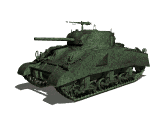|
|
|
|
| Type: |
Sturmtiger |
Armament: |
380mm RW61 |
| Built: |
Nov 2007 |
Armor: |
150mm |
| Builder: |
Derek Engelhaupt |
Rating: |
40/4 |
| Status: |
Rolling Chassis |
Battles: |
0 |
| Owner: |
Derek Engelhaupt |
Points Earned: |
0 |
| Call Sign: |
Fat Cat |
Points Given: |
0 |
| Notes: |
| |
Attachment chain tracks with ABS plastic padsPowered by M01 motors and Victor 883 ESCsWood and Aluminum plate constructionIndependent suspension
|
|
|
|
|

Click Photo For Enlargement (202 Kb)
|
|
|
|
Before it looked like this, it started out like...
|
|
|
|
|
...this. Using a 1/35 scale model for measurements scaled up to 1/6 scale and materials I had laying around the garage, I constructed the bottom of the hull out of 3/4" closet MDF shelf board. The upper and lower hull sides are made from 5/8" plywood. All of the other portions are made from 1/2" plywood. If it looks like there is an upward slope to the track sponsons, there is. I had to bend the 1/2" ply using a generous amount of screws starting from the rear of the tank.
|
|
|

Click Photo For Enlargement (280 Kb)
|
|
|
|

Click Photo For Enlargement (219 Kb)
|
|
|
|
Here's a front shot of the mocked up tank. Everything at this point was just screwed together. It took many trys to get all of the angles just right and the pieces to line up. The silver piece on the top front is aluminum and removable to gain access to the drive train for maintenance. You can just see the round aluminum plate on the outside of the lower hull used to re-enfore the 3/4" flanged bearing. Since the bulk of the bearing was pushed through the side of the hull, a rather large hole was created. I wanted to make sure the wood was strong enough to take the stress of the drive train. The bearing is secured to the hull with four 1/4" grade 8 bolts.
|
|
|
|
|
A rear view of the mockup. The black foamed PVC decking was eventually replaced by an 1/8" aluminum sheet and hinged.
|
|
|

Click Photo For Enlargement (245 Kb)
|
|
|
|

Click Photo For Enlargement (245 Kb)
|
|
|
|
Another mock-up pic showing the two 18AH batteries and the M-01 motors supplied by Joe Somer.
|
|
|
|
|
A closer look at the bearing arrangement and the massive 3/4" drive shafts. My M-01 motors still have the original 9 tooth #42 pitch sprocket on them.
|
|
|

Click Photo For Enlargement (272 Kb)
|
|
|
|

Click Photo For Enlargement (255 Kb)
|
|
|
|
I went through many different suspension set-ups during my build, but they all used the same principles. It's a 1/2" carriage bolt riding on two 1/2" flanged bearings (one on either side of the hull), with a shaft collar acting as a lever, and a 1/2" lock nut. I used carriage bolts due to the square portion of the head. Square holes were cut into the 1/8" steel suspension arms to mate with the carriage bolts. Currently the shaft collars are the set screw type. The set screws were replaced with grade 8 1/4" bolts and torqued to a point where the screw embedded itself into the 1/2" carriage bolt. I used grade 8 bolts because I've stripped grade 3 bolts using lots of torque. Since the flanges of the 1/2" bearings aren't that big, a large flat washer was placed between the 1/2" bearings and the wooden hull. That ensures the bearings won't pull through the wood. Most of the suspension arms use two springs seperated by a nut on the shaft collar bolt. One spring is under tension and the other isn't. It creates a progressive spring rate that keeps the wheels from deflecting too much and tracks from hitting the track sponsons underneath the tank. The front and rear most springs are set stiffer than the center springs to make sure the tank doesn't bounce too much during starts and stops.
|
|
|
|
|
A shot of the double spring set-up and one of the Victor 883 ESC's. Like my black rubber hammer marks and dings on the bottom of the hull from "design" changes?
|
|
|

Click Photo For Enlargement (239 Kb)
|
|
|
|

Click Photo For Enlargement (274 Kb)
|
|
|
|
Another shot from the opposite side showing the electronics mounting. The black box is of course the batteries that feed the Spektrum 2.4Ghz receiver which is then connected to the IMX-1 mixer. It mixes the two track ESC signals together on one stick of the transmitter enabling the tank's neutral turning capability.
|
|
|
|
|
|
|



